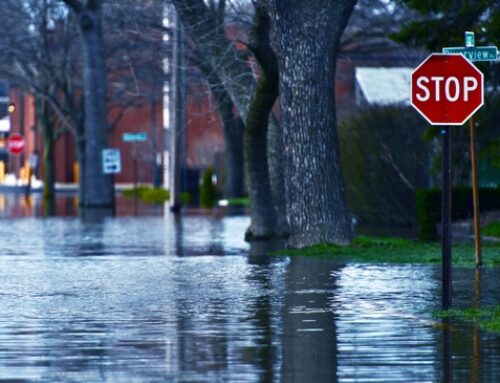Florida is no stranger to flooding. With its flat terrain and extensive coastline – not to mention frequent storms – flooding remains one of the biggest risks for homeowners. After a particularly catastrophic 2024 hurricane/flood season, many Floridians are choosing not just to repair, but to rebuild smarter, often by elevating their homes above the floodplain. It’s a proactive step that protects property and, potentially, reduces long-term costs. But how does this decision affect homeowners’ insurance rates? Let’s explore what elevation means for flood resilience and how it can impact what homeowners pay for insurance.

Why Raise a Home When Rebuilding?
When floodwaters rise, elevated homes stay dry. That’s the main idea behind elevating a structure. Many homeowners in flood-prone areas, especially after back-to-back years of damaging storms, are choosing to lift their homes several feet above the Base Flood Elevation (BFE)—a benchmark used by the Federal Emergency Management Agency (FEMA) to determine flood risk.
Raising a home can involve major renovations, including lifting the entire structure and building a new foundation underneath. It’s costly, but many homeowners see it as an investment in safety, property value, and long-term savings.
How It Impacts Flood Insurance Rates
The biggest financial benefit of elevating a home often comes through flood insurance. FEMA administers the National Flood Insurance Program (NFIP), which bases premiums on factors like:
- Property elevation relative to the BFE
- Flood zone classification
- Type of foundation
- Number of floors
- Enclosure use below the elevated floor
The higher a home is elevated above the BFE, the lower the flood risk— and the lower the insurance premium. In fact, elevating a home just one foot above the BFE can reduce flood insurance premiums by up to 30% or more. Elevating three or more feet can lead to even steeper reductions.
This incentive is a major reason why more Florida homeowners are opting to rebuild higher after severe flooding.
A Changing Insurance Landscape
While elevation can reduce flood insurance costs, it doesn’t always translate into lower homeowners’ insurance premiums— which cover wind, fire, theft, and other non-flood-related damages. Private homeowners’ insurance policies in Florida are increasingly expensive due to storm-related claims, litigation costs, and a shrinking pool of insurers willing to write new policies.
However, elevating your home may indirectly help here too. Insurers might view elevated homes as lower risk overall, especially if elevation comes with upgrades installed during the rebuilding process, like storm-rated windows or reinforced roofing. These improvements can sometimes earn homeowners’ discounts under certain carriers’ mitigation programs.
Rebuilding after a flood is never easy—but for many Floridians, it’s also an opportunity to build smarter and safer. Elevating a home is one of the most effective ways to protect against future flood damage and, over time, lower flood insurance costs significantly.
While insurance rates for other risks may still climb due to broader market conditions, taking proactive steps like elevation can show insurers that you’re serious about mitigation. It’s a win for your safety, your wallet, and the long-term resilience of your home. To learn more and receive expert guidance as to more insurance savings tips, call the professional team at Anderson & Associates Insurance Group. Our agency provides homeowners, flood and wind insurance to protect your home and your family. We’ve been helping Manatee County residents with their property insurance needs for two decades – how can we help you?









